What's in the Building Regulations?
When do Building Control Surveyors visit? and
What do they do when they do visit?
Independent Surveyors
We are independent surveyors, which means we are not linked to or owned by an estate agent or lending institute, and as a result we are only working with your best interests in mind. Since we are solely surveyors, we can keep our overheads down and ultimately our prices as well.
Please free phone us on 0800 298 5424 to speak to a surveyor. We feel the quality of our surveys is one of the best on the market. We offer a reasoned view, based upon our knowledge and experience and we don't make a mountain out of a molehill. Equally if we think the property has problems we say so in a clear, jargon-free manner. We also use sketches, photographs and digital images to clarify what we are saying like the examples shown below, and circles and ovals on our photos and sketches to highlight certain areas making our reports as easy to understand as possible.
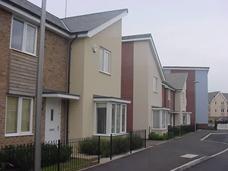 |
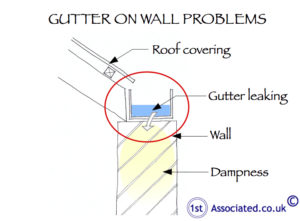 |
|
An example of one of our photos
|
An example of one of our sketches
|
Having a survey carried out on a property by a qualified surveyor will give you extra peace of mind.
Free phone 0800 298 5424
What are the Building Regulations?
The building regulations are a set of regulations that specify the minimum standards of construction required when the property is built and are very much about safety.
What is a Building Control Surveyor?
Sometimes known as a Building Control Officer, also known as the Building Regulations Department, sometimes known as the District Surveyor. All of them when dealing with new building regulations check any properties that are built and brought to their attention meet this standard. At the end of the process a completion certificate is issued however this isn't a guarantee that everything is ok with the building.
Does the Building Control Surveyor set the standards on the building site or does the builder set the standards?
 Building control is a process that every major building construction has to go through before building on site.
Building control is a process that every major building construction has to go through before building on site.
There are several stages to a building project:-
• Planning Permission
• Building Regulations
In brief what does each of these stages do?
Planning Permission explained and when do I need Planning Permission?
Planning permission broadly looks at the aesthetics of the project and how it fits in and suits the location. This can be what is known as an outline planning permission where you look to see if the project is possible and fits the plan for the area (each area has a development plan that is built up by the local authority after consultation). Detailed planning permission, exactly what it says is required for anything from a brand new Tesco's shopping centre to an extension on your house.
Building Control explained
We said briefly above that building control relates to the safety standards in building and looks at the minimum standards. We would add to this it is also a development of best practice that's happened over many years. It's now set down in law under the building regulations and appended to this are the building regulations approved documents, which explain ways in which you can meet the building regulation requirements, which are very much set out as a performance standard. This means that you have to meet a set level of performance say to meet building regulations performance standard maybe that it isn't damp.
Building Regulations what do I need to do?
 However you still can't build if you have just planning permission (or you can but it's very much at your own risk and could be a very expensive way forward). You then need to have building regulations approval which looks at how a property is built and requires that you provide drawings showing how the building is put together. There is a document known as a Building Regulations Approved Document, which gives guidance on the building regulations which are a statutory requirement and best or common design practice.
However you still can't build if you have just planning permission (or you can but it's very much at your own risk and could be a very expensive way forward). You then need to have building regulations approval which looks at how a property is built and requires that you provide drawings showing how the building is put together. There is a document known as a Building Regulations Approved Document, which gives guidance on the building regulations which are a statutory requirement and best or common design practice.
The different stages and parts to the Building Regulations
 Building Regulations Structural Safety Part A
Building Regulations Structural Safety Part A
The weight of the building from the walls, furniture and people in the building will be transmitted to the ground, so as not to cause instability to the building or other buildings. Requires buildings to be built in a way ensuring no collapse will occur disproportionate to its cause.
Ground movement such as freezing of subsoil will not impair the stability of the building.
Building Regulations Fire Safety Part B
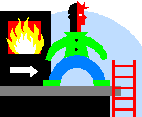 Requires safe means of escape from the building.
Requires safe means of escape from the building.
Requires the stability of a building to be maintained in a fire, both internally and externally.
Internally - the wall lining i.e. plaster, plasterboard or wooden boards on the walls and ceiling will resist the spread of flames and give off reasonable levels of heat, if on fire. Internal stability will be maintained during fire and fire spread will be prohibited.
Fire and smoke will be prohibited from spreading to concealed spaces in a buildings structure.
Externally - the external walls and roof will resist spread of fire to walls and roofs of other buildings. The building will be easily accessible for fire fighters and their equipment.
Building Regulations Site Preparation and Damp Proofing Part C
Nothing should be growing on the ground covered by the building.
Precautions must be taken to stop gases and dangerous substances from previous land use from entering the building and endangering the health and safety of occupants.
Subsoil drainage will be in place, if needed, to stop the passage of ground moisture to the interior of the building and to prevent damage to the fabric of the building.
The walls, floors and roof of the building shall prevent moisture passing to the inside of the building.
 Building Regulations Toxic Substances Part D
Building Regulations Toxic Substances Part D
Insulating materials inserted into cavity walls can give off fumes. Prevention must be taken to stop these fumes reaching occupants of the building.
 Building Regulations Soundproofing Part E
Building Regulations Soundproofing Part E
Floors and walls between domestic buildings should have a certain resistance to the passage of sound.
Sound insulation requirements also apply to floors and certain walls within individual dwellings and new schools.
Building Regulations Ventilation Part F
The building must have adequate ventilation and provision to prevent condensation occurring in the roof structure.
 Building Regulations Hygiene Part G
Building Regulations Hygiene Part G
Adequate sanitation facilities i.e. toilet.
A house must have either a bath or shower with ability to heat hot water.
Unvented hot water storage systems - Restrictions apply to who can install the system.
Building Regulations Drainage and Waste Disposal Part H
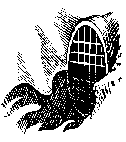
An adequate system to carry water used for cooking, washing, toilet, bath or shower to a sewer cesspool or settlement tank must be in place.
A cesspool or settlement tank must be impermeable to liquids and have adequate ventilation. It must also have means of access for emptying, not harm the health of any person and not contaminate water or water supply.
An adequate system to carry rainwater away from the roof of a building eg. guttering carrying water to a sewer.
A place to put a wheelie bin or dustbin. The place must not harm anyone's health.
Building Regulations Heating Appliances Part J
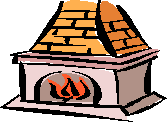 Must have an adequate air supply for combustion and for efficient working of a fluepipe or chimney.
Must have an adequate air supply for combustion and for efficient working of a fluepipe or chimney.
Appliances shall discharge the products of combustion to the outside.
The appliance, fireplace and chimney shall reduce the risk of the building catching fire.
 Building Regulations Stairs, Ramps and Guards Part K
Building Regulations Stairs, Ramps and Guards Part K
Stairs, ramps and ladders shall provide safety for people, when moving between different levels of a building.
Stairs, ramps, floors and balconies shall be adequately guarded.
Safety shall be provided for people using vehicle ramps and loading bays.
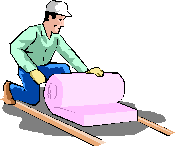 Building Regulations Conservation of Fuel and Power Part L
Building Regulations Conservation of Fuel and Power Part L
Part L has recently been sub-divided into four areas, New Dwellings, Existing Dwellings, New Buildings Other Than Dwellings, Existing Buildings Other Than Dwellings.
Provision must be made for the conservation of fuel and power in a building.
The fabric of the building must limit heat loss.
Controls to operate the heating of the building and heating of water.
By limiting heat loss from hot water tanks and hot water pipes.
Lighting systems in buildings should use no more energy than needed and have adequate controls.
Building Regulations Access and Facilities for People with Disabilities Part M
In Part M, "people with disabilities" means people who have an impairment which limits their ability to walk or which requires them to use a wheelchair for mobility or have impaired hearing or sight.
Reasonable provision shall be made for people with disabilities at entrances to and within new dwellings and buildings.
An existing building should have reasonable provision:
For people with disabilities to gain access and use the building.
If toilets are provided, reasonable provision shall be made available for people with disabilities.
If a building has seating such as audience or spectator seating, reasonable provision should be made for people with disabilities.
Building Regulations Glazing Materials and Protection Part N
 Glazing that people come into contact with whilst in a building, should, if broken, break in a way unlikely to cause injury, resist impact without breaking or be shielded or protected from impact.
Glazing that people come into contact with whilst in a building, should, if broken, break in a way unlikely to cause injury, resist impact without breaking or be shielded or protected from impact.
Buildings, other than dwellings that have transparent glazing which people come into contact with while moving around a building, must have features to make it apparent. Windows that can be opened must be operated safely and provision made for safe accessible cleaning.
Building Regulations Electrical Safety Part P
These change from time to time. Plans and drawings are submitted to pass these various regulations.
Thank you for reading this article. Other articles that may be of interest to you on our website are:
Does Building Control Approval mean that the property is up to modern day standards?
Approved Inspectors - v Local Authority Building Control Officers
Compare our Building Surveys but don't compare Apples with Thursdays
If you are looking for a Building Survey or a Structural Survey on a home, house or commercial property we believe as Building Surveyors we have a wealth of experience and expertise that we can use to help you.
We have surveyed many different types and eras of property from modernised Georgian property to large warehouses and are more than happy to send you example surveys. Please call us on 0800 298 5424.
Why we always recommend having an independent building survey?
If you are moving house or having any property issues then an independent Surveyor can help provide a comprehensive survey report on a building whether that be residential or commercial. Always have an independent building survey as this will pin point any property problems.
Caveat emptor means buyer beware and is why you need to have a building survey to find out if there are any problems within the property; the estate agent certainly will not advise you of any.
Remember the independent building Surveyor that you employ will be the only person working for you with your interests at heart
Independent commercial property surveyors
If you have a commercial property, be it leasehold or freehold, then you may wish to look at our Dilapidations Website at www.DilapsHelp.com and for Disputes go to our Disputes Help site www.DisputesHelp.com .
Our articles
We hope you found the article of use and if you have any experiences that you feel should be added to this article that would benefit others, or you feel that some of the information that we have put is wrong then please do not hesitate to contact us (we are only human).
The contents of the web site are for general information only and are not intended to be relied upon for specific or general decisions. Appropriate independent professional advice should be paid for before making such a decision.
All rights reserved by 1stAssociated.co.uk
All rights are reserved the contents of the web site is not to be reproduced or transmitted in any form in whole or part without the express written permission of www.1stAssociated.co.uk
If you require any information about Building Regulations please telephone us for help and advice on free phone 0800 298 5424
